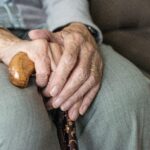When most people think of breast cancer, they picture women. But men have small amounts of breast tissue, too, which means they can also develop the disease.
Although it’s rare, breast cancer in men can be serious, especially for older adults. As men age, their hormones, lifestyle, and medical history can affect their chances of developing it.
This article explains the common risk factors for breast cancer in aging men and why awareness is key to early detection.
Hormonal Imbalances and Their Effects
Hormones control many body processes, including how breast tissue grows. When men have higher estrogen or lower testosterone levels, it can cause abnormal cell changes.
As men get older, their testosterone levels drop while estrogen levels can rise. This hormonal shift increases the risk of breast cancer in aging men. Obesity, liver disease, and certain genetic conditions like Klinefelter’s syndrome can make this imbalance worse.
Maintaining a healthy weight, drinking alcohol only in moderation, and managing long-term health problems can help balance hormones and reduce risk.
Family History and Genetic Risks
Genetics plays a major role in who develops breast cancer. Men with close relatives-especially mothers or sisters who had breast cancer have a higher chance of getting it too.
Inherited gene mutations, such as BRCA1 and BRCA2, are known to increase the risk for both men and women. These genes normally help repair DNA, but when they don’t work properly, they allow damaged cells to grow and form tumors. Knowing your risk early gives you time to plan regular screenings and preventive care.
Age and Lifestyle Choices Matter
Age is one of the biggest risk factors. Most cases of male breast cancer happen between the ages of 60 and 70. As cells age, they are more likely to develop harmful changes that lead to cancer.
Lifestyle choices also have a big impact. Being overweight, eating unhealthy foods, smoking, and drinking too much alcohol can raise estrogen levels and cause inflammation. These changes make it easier for cancer cells to grow.
Simple steps like eating more fruits and vegetables, staying active, and quitting smoking can make a big difference. Routine doctor visits are also important for checking for early warning signs.
Radiation Exposure and Past Treatments
Men who have had radiation treatments to the chest are more likely to develop breast cancer later in life. This can happen after medical treatments for other illnesses, such as lymphoma.
Radiation can damage DNA and cause cell changes that may not appear for years. Anyone who has had chest radiation should tell their doctor about it and watch for warning signs like lumps, swelling, or nipple discharge.
Medical Conditions That Increase Risk
Some medical conditions can also raise a man’s risk. Chronic liver disease, such as cirrhosis, affects hormone balance and can increase estrogen levels. Problems with the testicles, such as injury or infection, can lower testosterone and raise cancer risk.
Diabetes can also play a part because it affects insulin and hormone regulation. Managing these conditions through treatment and regular checkups helps keep hormones balanced and lowers overall risk.
Breast Cancer in Aging Men: Awareness and Early Action Save Lives
Breast cancer in men is rare but not impossible-especially as men age. Hormonal changes, family history, aging, and past medical treatments all play a role.
Don’t wait for symptoms to appear. Talk to your doctor if you notice any breast changes or have a family history of cancer. Early awareness and medical guidance can save your life.
Looking for more tips to help you out? Check out what else we have available on our blog!






